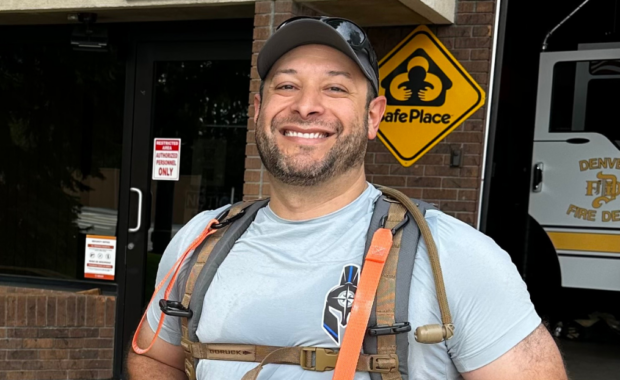A Day in the Life of a PA in Primary Care
Jul 8, 2014
By Robin Bull
I’ve been working in family medicine for two years now. Some things we do every day may seem routine, but there is nothing ordinary about how we care for our patients.
Here is a recent day at my practice.
Getting ready
Upon arrival at the office, I greet our nurses and turn on my computer. I review my inbox messages in the electronic medical record (EMR) system to see what needs to be done first and which test results are in. I look for a patient’s mammogram that was done yesterday evening, but it’s not back yet.
I review the day’s schedule, and at a glance I recognize more than half the patients by name. There is a colorful list of complaints:
- A baby with fever
- An adult with ear pain
- A new patient with a rash
- A mom of three with fatigue
- A few routine physicals
- A patient with leg swelling
- And the always enigmatic “concerns”
I anticipate a busy day.
Morning patients
I triage a few calls while the first patient is being escorted to the room.
The baby with a fever just has a cold and looks well. So the mom and I chat about developmental milestones, introducing solids, and how she can get her older children to help out at home.
The 42-year-old with ear pain has a bad otitis externa that he ignored for a week. After sending his medication to the pharmacy, I ask about his smoking. He doesn’t think he needs to quit. We talk about his dad, who had a heart attack. We talk about risk factors for heart disease and how to incorporate exercise into his shift work. I order cholesterol screening and plan to see him back in a week to recheck the ear.
At every future visit, I’ll gently probe about smoking cessation until he’s open to considering it. If I don’t, I’m not doing my job.
Around 10 a.m. I see an elderly patient I know who is with her son. He thinks she cannot safely live alone anymore. Her memory is not so good, and she’s struggling to manage her diabetes. He has to leave work often to go check on her.
I sense her son wants to talk about nursing facilities. But he doesn’t know how to bring it up with his mom. We have that hard discussion, and they both express their fears and hopes. I order some tests and arrange for a home nurse to do an assessment. I ask our practice-based care manager to give them contact information for assisted living homes. We plan to talk more by phone next week when the test results are in. Her son’s gratitude is visible.
I take a few quick minutes to read messages and results in my inbox. With our EMR system, patients can send and receive secure emails online, making it easy to communicate without playing phone tag.
I call one patient about his ultrasound instead of sending an email because I know he’ll have questions and I want to get an update on his bowel problems.
My patient’s mammogram results are not in.
Lunchtime
During lunch, I make a quick phone call to check in with a patient I saw two weeks ago who was struggling with work stress, marital problems, and severe depression. He thinks his medication is helping, and he’s taking some positive steps to mend things with his wife.
He then mentions he scraped his arm with a piece of metal in the garage the other day. I see his tetanus booster is up to date, so I advise him on wound care and ask him to come in if there are signs of infection.
Afternoon patients
The gentleman with “concerns” comes in around 2 p.m. He is worried about sexually transmitted diseases, so we order some tests and talk about contraception.
My new patient with a rash has what looks like hot tub folliculitis. But the extent of the rash is unusual, and her history makes folliculitis a remote chance at best. I consult a dermatology reference. Then I ask my supervising physician to pop in and take a look, and he brings the medical student along. She’s doing a monthly rotation in our office and works with a different preceptor each day.
We make a treatment plan. She is overdue for a pap smear and well physical, so I ask her to return in a week to focus on health maintenance and recheck the rash.
I get back to my desk, and my patient’s mammogram and breast ultrasound are back. The radiologist found a suspicious mass and lymph nodes in the area I felt during her exam last week.
I call her at home. She is around my age, and I hear her kids in the background. She cries. I listen. I tell her I will arrange for a biopsy and surgical consult right away, and she thanks me for the call.
Her case is still on my mind as I hurry to see my last few patients, and finish charting. She might be back for a pre-op physical at some point, but I make a note to have the nurse check in on her in a few weeks.
Wrapping up
At the end of the day, I ask our medical student about any interesting cases she saw. The physicians in our office have let her do a few procedures like mole removal and Pap smears. She tells me that she loves everything she’s done so far in her rotation, and I smile.
Welcome to our world of family medicine.
Robin Bull, MS, PA-C, is a physician assistant at Squirrel Hill Family Medicine, University of Pittsburgh Medical Center.
Thank you for reading AAPA’s News Central
You have 2 articles left this month. Create a free account to read more stories, or become a member for more access to exclusive benefits! Already have an account? Log in.


